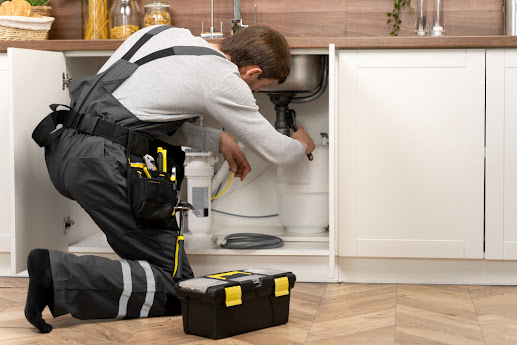What are the Different Types of Wind Damage to Roofs?
When we think about potential home threats, natural disasters often come to mind. Windstorms can wreak havoc on our property, particularly our roofs. Understanding the various types of wind damage to roofs is essential for homeowners to be prepared and take preventative measures. Wind can cause various issues requiring attention, from missing shingles to structural compromise. Only professional wind damage roof repair services can rescue you in such cases.
1. Missing or Damaged Shingles
One of the most common wind damage to roofs is missing or damaged shingles. High winds can lift and tear shingles from the roof, exposing underlying layers to the elements. Even if just a few shingles are compromised, the protective barrier of the roof is weakened, making it susceptible to leaks and water damage. Regularly inspecting your roof for any missing, curled, or torn shingles after a windstorm is crucial to address potential issues before they escalate.
2. Lifted Flashing
Flashing plays a crucial role in preventing water from seeping into the roof's vulnerable areas, such as around chimneys, vents, and skylights. Windstorms can lift or loosen flashing, compromising their effectiveness and leaving gaps for water to infiltrate. Regularly inspecting and maintaining flashing is essential to prevent water damage and maintain the integrity of your roof's structure.
3. Roof Material Erosion
Wind carries not only debris but also fine particles that can erode the surface of roofing materials over time. This erosion can deplete the roof's defensive layer, making it more liable to leaks, cracks, and wind damage. While this damage might not be instantly apparent, its accumulative effects can be significant. Periodic roof inspections and maintenance can help identify and address erosion before it leads to more extensive issues.
4. Structural Compromise
Extreme windstorms, such as hurricanes and tornadoes, can exert immense pressure on a roof's structure. It can lead to the structural compromise of the roof, including sagging or even collapse in severe cases. While modern building codes are designed to ensure roofs can withstand certain wind speeds, the intensity of some storms might exceed these limits. Regular roof inspections and ensuring your roof is up to code can minimize the risk of structural compromise during wind events. Calling the wind damage roof repair experts from Super Savers Restoration Inc. on time is always a wonderful decision to safeguard your property and prevent further damage.
5. Gutter and Downspout Damage
While gutters and downspouts might not be part of the roof itself, they are critical in channelling water away from it. Strong winds can cause litter, such as branches and leaves, nestled in gutters and downspouts, leading to clogs. It, in turn, can force water to collect on the roof, leading to leaks and water damage. Cleaning and maintaining gutters and downspouts can prevent these issues and keep water flowing freely off your roof.
6. Skylight and Ventilation Damage
Skylights and ventilation systems are essential components of a well-maintained roof but can also be vulnerable to wind damage. High winds can break or loosen skylights, seeping water into your home. Additionally, strong winds can compromise ventilation systems, affecting your home's energy efficiency and overall comfort. These features ' proper installation and regular maintenance are crucial to prevent wind-related damage. Wind damage roof repair professionals can fix the issue efficiently.
Prevention and Preparedness Measures for Propertyowners
There are several preventive measures and preparedness steps you can take to minimize the impact of wind damage on your roof :
Regular Inspections: Schedule regular roof inspections, especially after severe windstorms, to promptly identify and address any damage.
Secure Loose Items: Before a windstorm, secure or store loose items in your yard that could become projectiles and cause damage to your roof or property.
Trim Trees: Trim back overhanging branches that could fall onto your roof during a wind event.
Choose Resilient Materials: If you're building or replacing your roof, consider hiring certified wind damage roof repair professionals who use high-quality roof construction materials designed to withstand high winds.
Reinforce Roof Structure: If you live in an area prone to strong winds, consider reinforcing your roof's structure to enhance resistance.
Conclusion
Wind damage is a significant threat to the integrity of our roofs, potentially leading to leaks, water damage, and structural compromise. Understanding the types of wind damage that can occur and taking preventative measures can go a long way in protecting your home. Regular inspections, proper maintenance, and choosing resilient materials are all essential steps in ensuring your roof can weather the storms that come its way. By being proactive, you can safeguard your investment and maintain the comfort and safety of your home for years to come. Contact Super Savers Restoration Inc. for excellent wind damage roof repair services at unmatched prices.




Comments
Post a Comment